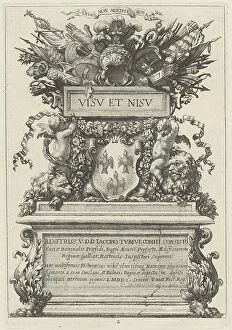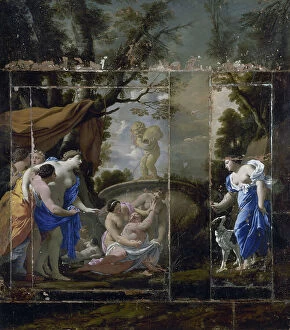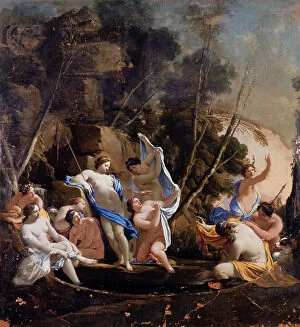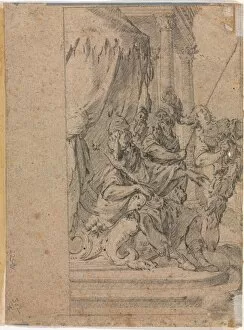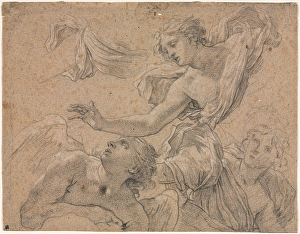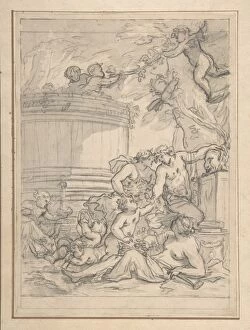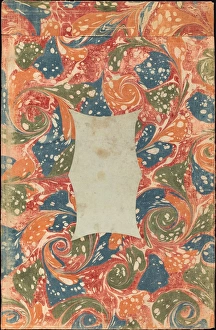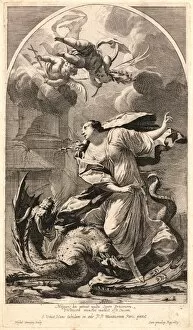Michel Dorigny Collection
Michel Dorigny, a French artist from the 17th century, was known for his exquisite studies of angels and mythological scenes
All Professionally Made to Order for Quick Shipping
Michel Dorigny, a French artist from the 17th century, was known for his exquisite studies of angels and mythological scenes. One of his notable works is "Studies of Angels, " which showcases his mastery in capturing the ethereal beauty and delicate features of these celestial beings. In this piece, Dorigny's meticulous attention to detail brings forth a sense of divine grace and serenity. Another intriguing artwork by Dorigny is "Panthea before Cyrus?" On the verso side, this composition depicts a captivating scene that hints at an ancient tale involving Panthea and Cyrus. The artist's skillful use of light and shadow creates a dramatic atmosphere, leaving viewers curious about the unfolding story behind this enigmatic encounter. Dorigny also delved into Greek mythology with his depiction of Hercules battling the Hydra. This dynamic portrayal captures the hero's strength and determination as he confronts this fearsome creature. Through bold brushwork and intense detailing, Dorigny breathes life into this legendary moment. In addition to these mythological themes, Dorigny explored subjects like Bacchanals - lively celebrations dedicated to Bacchus, the Roman god of wine. His work titled "Bacchanal" showcases vibrant figures dancing amidst swirling drapery while reveling in joyous ecstasy. This piece exemplifies Dorigny's ability to capture movement and energy through expressive lines. The artist also excelled in etching techniques as seen in his prints such as "Seated Bacchante with Children. " Here he portrays a serene female figure surrounded by playful cherubs - an embodiment of maternal love intertwined with mythical symbolism. Furthermore, another etching by Dorigny titled "Faun Embracing a Bacchante" reveals his talent for depicting sensuality within classical narratives. The intimate embrace between these two figures exudes passion while showcasing the artist's ability to convey emotion through intricate line work.

